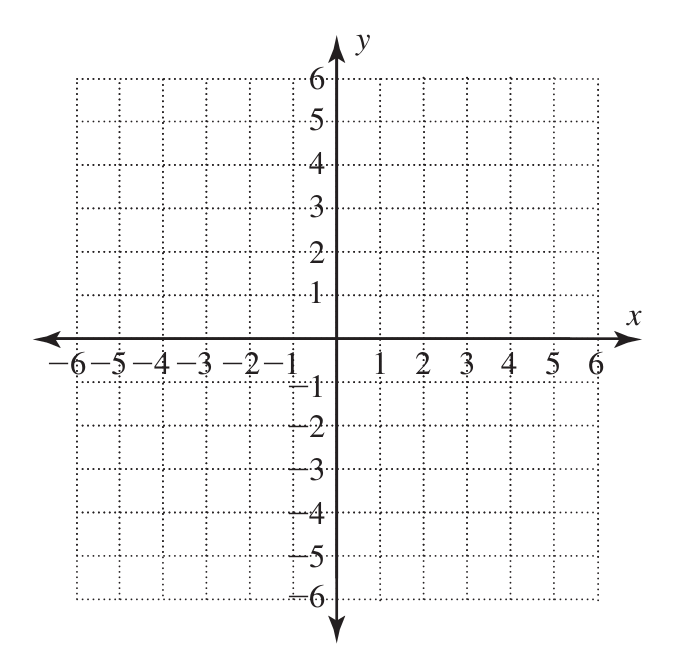Functions with radicals are a basic class of functions.
Basic Square Root and Cube Root Functions $$f(x)=\sqrt{x} \,\,\,\,\,\,\,\,\,\,\,\,\,\,\,\,\,\,\,\,\,\,\,\,\,\,\,\,\,\,\,\,\,\,\,\,\,\,\,\,\,\,\,\,\,\,\,\,\,\,\, g(x)=\sqrt[3]{x}$$
Example: Given $f(x)=\sqrt{x-2},$ complete the table below, sketch a graph of $f(x),$ and determine the domain $D$ and range $R$ of $f(x).$
$
\begin{array}{c|c}
x & f(x) \\ \hline
2 & \\ \hline
3 & \\ \hline
6 & \\ \hline
11 & \\ \hline
\end{array}
$


Graphing Square Root and Cube Root Functions Using Transformations
Example: Graph $f(x)=\sqrt{x-2}+3$
Graphing Square Root and Cube Root Functions Using Transformations
Example: Graph $f(x)=\sqrt{x-2}+3$
Step 1: Identify prototype (parent) function: $p(x)=\sqrt{x}.$
Step 2: Perform shift of $2$ to the right: $y=\,$$\,\sqrt{x-2}.$
Step 3: Perform shift of $3$ upward: $y=$$\sqrt{x-2}$$\,+\,3$
Transformations of $p(x)=\sqrt[n]{x}$: Vertical and Horizontal Shifts
The graph of $f(x)=\,$$\,\sqrt[n]{x-h}$$\,+\,k$ is the graph of $p(x)=\sqrt[n]{x}$ shifted to the right by $h$ and up by $k.$
The graph of $f(x)=\,$$\,\sqrt[n]{x-h}$$\,-\,k$ is the graph of $p(x)=\sqrt[n]{x}$ shifted to the right by $h$ and down by $k.$
The graph of $f(x)=\,$$\,\sqrt[n]{x+h}$$\,+\,k$ is the graph of $p(x)=\sqrt[n]{x}$ shifted to the left by $h$ and up by $k.$
The graph of $f(x)=\,$$\,\sqrt[n]{x+h}$$\,-\,k$ is the graph of $p(x)=\sqrt[n]{x}$ shifted to the left by $h$ and down by $k.$
Graphing Square Root and Cube Root Functions Using Transformations
Example: $g(x)=\sqrt[3]{x+1}-2$

Recap
$f(x)=$ $\sqrt{x-2}$ $+\,3\,\,\,\,\,\,\,\,\,\,\,\,\,\,\,\,\,\,\,\,\,\,\,\,\,\,\,\,\,\,\,\,\,\,$ $g(x)=$$\sqrt[3]{x+1}$ $-\,2$
Graphs of Square Root and Cube Root Functions
Example: Write the formula for the function of each graph below.
Other Transformations: Stretching and Reflecting
Example: Graph $f(x)=-2\sqrt{x+3}+4.$
Step 1: Identify prototype (parent) function: $p(x)=\sqrt{x}.$
Step 2: Perform shift of $3$ to the left: $y=\,$$\,\sqrt{x+3}.$
Step 3: Perform stretch vertically by $2$: $y=$$\,2\,$$\sqrt{x+3}$
Step 3: Perform reflect over $x$-axis with $-$ sign: $y=$$\,-2\,$$\sqrt{x+3}$
Step 4: Perform shift of $4$ upward: $y=$ $-2$ $\sqrt{x+3}$$\,+\,4$
Transformations of $p(x)=\sqrt[n]{x}$: Vertical Stretching and Flipping
The graph of $f(x)=\,$$a$$\,\sqrt[n]{x}$ is the graph of $p(x)=\sqrt[n]{x}$ vertically stretched by a factor of $a.$
The graph of $f(x)=\,$$-$$\,\sqrt[n]{x}$ is the graph of $p(x)=\sqrt[n]{x}$ reflected over the $x$-axis.
The graph of $f(x)=\,$$-a$$\,\sqrt[n]{x}$ is
the graph of $p(x)=\sqrt[n]{x}$ reflected over the $x$-axis and then vertically stretched by a factor of $a.$
Order of Transformations
Generally speaking, when using transformations to graph a function, we work from the inside out.
When performing transformations on $p(x)=\sqrt[n]{x}:$
Perform horizontal shifts first.
Perform vertical stretching/flipping second.
Perform vertical shifts third.
Example: Graph $g(x)=3 \sqrt[3]{x-1}+2$

Recap
$f(x)=\,$$-2$ $\sqrt{x+3}$ $+\,4\,\,\,\,\,\,\,\,\,\,\,\,\,\,\,\,\,\,\,\,\,\,\,\,\,\,\,\,\,\,\,\,\,\,$ $g(x)=$$\,3\,$$\sqrt[3]{x-1}$ $+\,2$
Example: Given $f(x)=\sqrt{3−x},$ complete the table below, sketch a graph of $f(x),$ and determine the domain $D$ and range $R$ of $f(x).$
$
\begin{array}{c|c}
x & f(x) \\ \hline
-6 & \\ \hline
-1 & \\ \hline
2 & \\ \hline
3 & \\ \hline
\end{array}
$


Question: How would we find the domain and range algebraically?
Example: Algebraically determine the domain $D$ and range $R$ of $$f(x)=\sqrt{7-4x}.$$
Since the index of the radical is even, whatever is under the radical must be non-negative. So,
$$
7-4x\geq 0
$$
Then, $7\geq 4x$ so that $\displaystyle \frac{7}{4}\geq x,$ or
$$
x \leq \frac{7}{4}
$$
Thus, the domain is
$$
D=\left(-\infty,\frac{7}{4}\right]
$$
Example: Algebraically determine the domain $D$ and range $R$ of $$g(x)=\sqrt[3]{7x-3}.$$
Since the index of the radical is odd, any real number, including negative numbers, can go under the radical. So,
$$
D=\mathbb{R}=(-\infty,\infty)
$$